My trusted sourdough starter is a firm white one, that I've had for just under a year now. We got off to a shaky start, but it's become amazingly reliable and flexible. It seems to respond very quickly to feedings and has a great leavening capacity. My only minor complaint would be that it's very mild in flavour, and imparts only a slight tanginess to the loaves. So, as an experiment, I decided to start a new rye starter from scratch, and see if this would result in more sour breads. I had lots of rye flour on hand, and rye starters are said to be among the easiest to get going (in addition to e.g. spelt starters or rice starters). I used the recipe in "Bread": Equal weights of whole rye flour and water, mix and let sit 24 hrs. I went with 50 gr. each of flour and water:
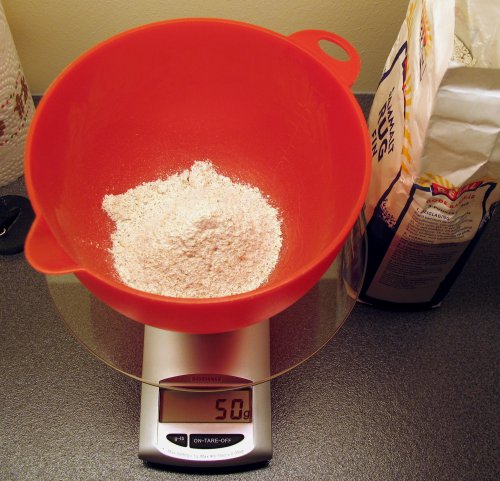
After 24 hrs., keep 50 gr. of the original mix, and add 50 gr. each of flour and water. Let sit another 24 hrs., and then continue this regimen, but with 12 hr. intervals instead of 24.
Nothing much happened the first 24 hours, but on the second day I got hit pretty badly with leuconostoc. The mix had tripled in volume, looked dark brown with hints of green, it was very runny and smelled rather pungent. *yuck* Well, soldier on, I say. The activity dropped markedly during day 3, and the odour became a lot milder, and smelled more of yogurt than of the leuconostoc madness. Nothing much happened in volume until the end of day 4, when the mix all of a sudden started tripling again! Phew! The culture started to smell healthy, looked greyish in colour (as I expected it should), and had a fragile, but not runny consistency when ripe and ready for new feeding. Below is a photo taken sometime during day 5. You can see some small patches of rye flour on the top - I usually sprinkle rye flour over the mix after each feeding, so that it's easy to gauge the level of activity:
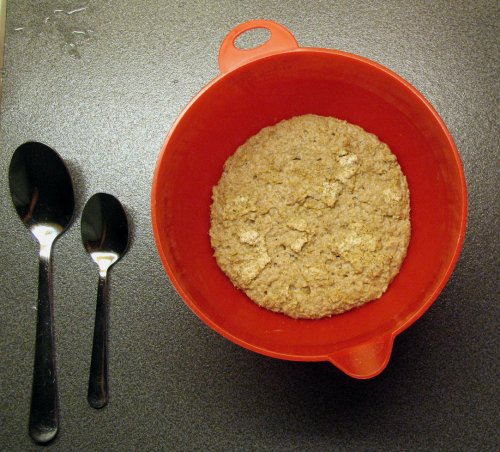
I followed Hamelman's directions, and kept feeding out day 6, and then two more days to ensure that things are stabilized and healthy.
Today I decided to try it out, and devised a simple multigrain loaf for it. This one's approx. 33% whole rye, the rest bread flour, with a soaker of oat bran, flax, sunflower seeds and rye chops. I used equal amounts water and yogurt in the final dough, and added a tiny spoon of honey for good measure. I didn't use any commerical yeast, but prefermented 25% of the flour (new rye starter). I went with a 2 hr. bulk ferment (fold after 1 hr.) and retarded in fridge for 8 hrs. It could probably have gone a bit further in the fridge for the final proof, but I got scared with a third rye in there. It kept up well, and rose remarkably during baking:
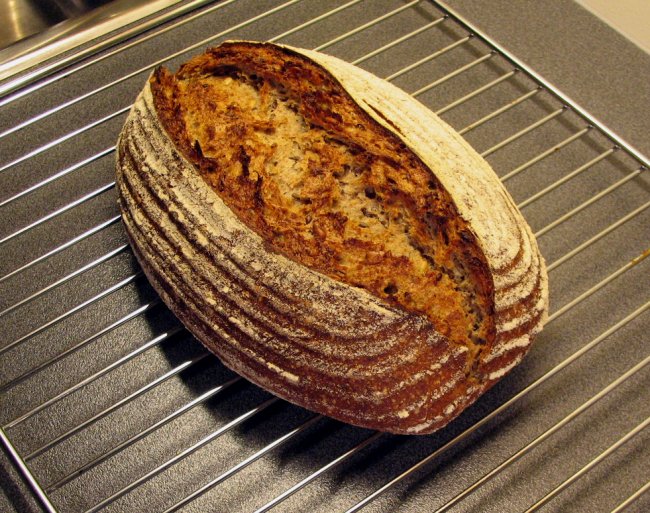
It was a lovely loaf, and I must admit, slightly tangier in taste than what I get with my firm white starter. A bit more sour, not overwhelmingly so, but pleasantly tangy. I think I'll keep both for the time being, and see how the new born develops in flavour as the weeks go on. In the meantime I need to come up with a name for it... I'm thinking about Aladdin, but it's far from settled yet.
To celebrate the new starter and nice tasting multigrain, I decided to have a go at a caramel cake from Friberg's second pastry book. It's a delicious concoction of a thin shortdough bottom, and two sponge cake layers sandwiching a rich caramel cream. Here I'm folding caramel sauce into the cream:
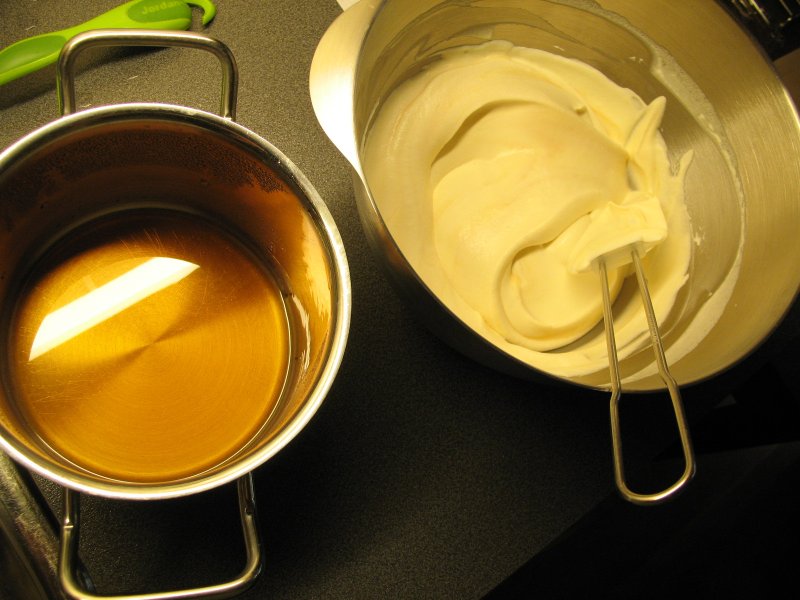
And below is the cake before icing. It looks pretty cool if you ask me: You make one almond sponge and one cocoa almond sponge. After they've cooled, you use a cookie cutter to cut out the middle of each sponge, and interchange the middle cut outs. You only use half of each sponge in this assembly, so the remaining sponge layers can be frozen. Lovely thick caramel cream in the middle:
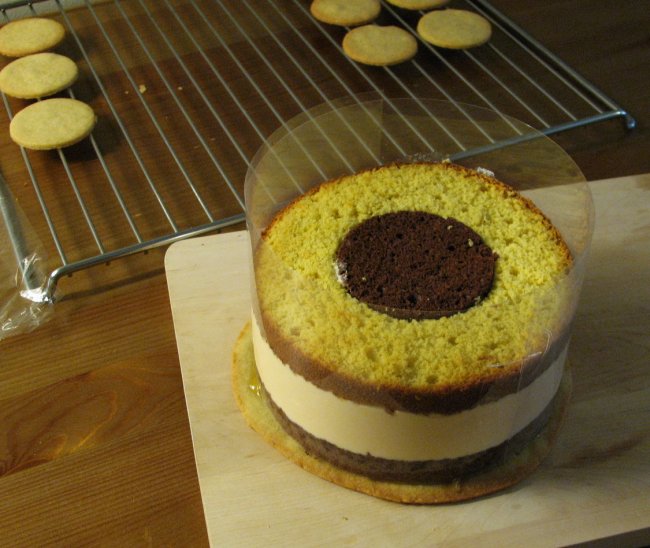
The caramel cream is set with some gelatin, so after a few hours in the fridge, you're set to ice it. Cut the protruding shortdough bottom, then ice with whipped cream. Decorate with some chocolate shavings on top:
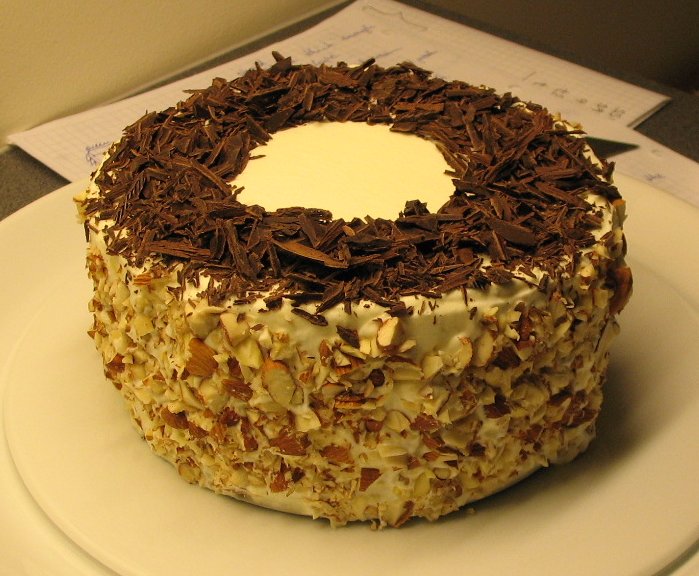
And here's the first slice:
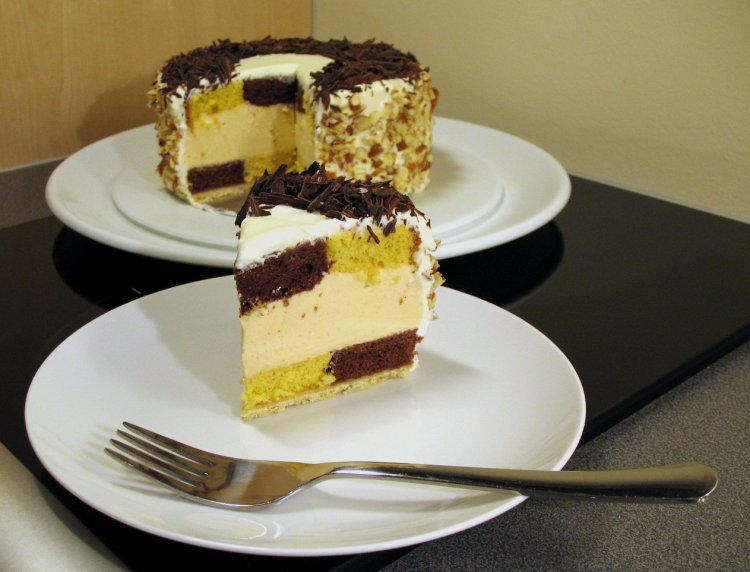
The taste is absolute caramel heaven! I really like the unusual look given by the two sponges, and the shortdough bottom gives a nice constrasting crunch to the creamy rest of the cake.














